The Summer Triangle
No it's not a summer romance, but it is a summer celestial event. Learn more about this shining asterism.
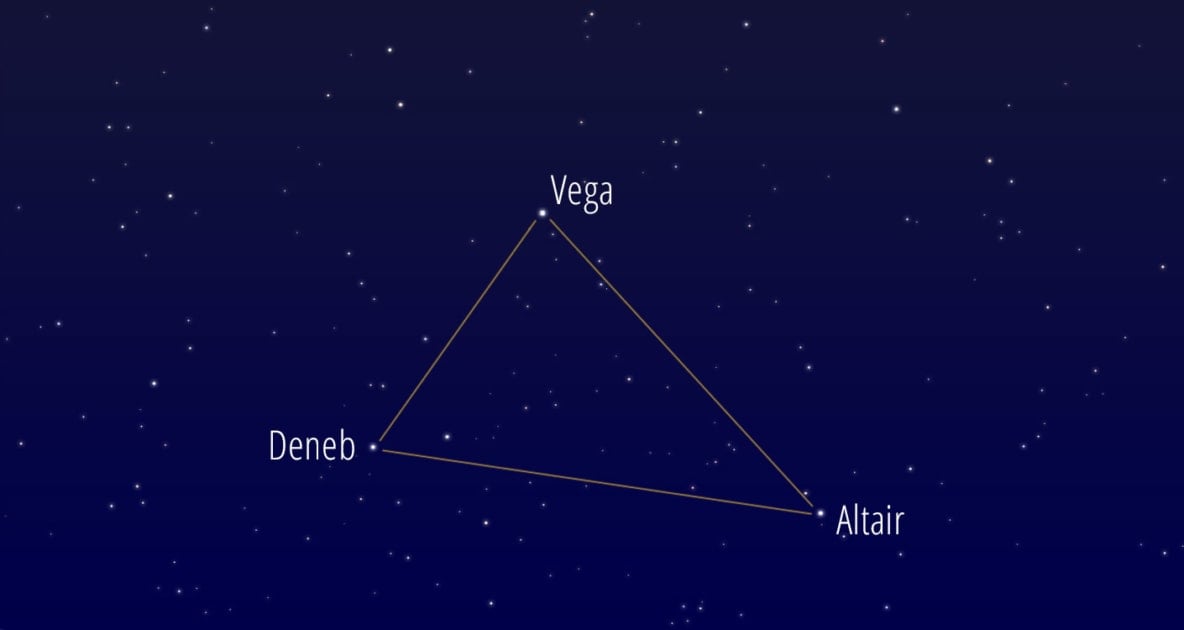
Remember the movie Cast Away? The one starring Tom Hanks as a FedEx employee stranded on an uninhabited island after his plane crashes in the South Pacific. Well I was watching it the other day and it gave me the idea for this month’s astronomy topic.
As darkness falls on these balmy July evenings, the famous “Summer Triangle” is high in the eastern sky. The triangle is composed of three of the brightest stars in the sky, each the brightest star in its own constellation. The brightest is the bluish-white star Vega, in Lyra the Lyre. Next in brightness is yellow-white Altair in Aquila, the Eagle. Finally there is white Deneb, in Cygnus, the Swan.
Sometimes when I find myself outdoors and giving an impromptu talk on the night sky, I’ll direct my audience’s attention to the Summer Triangle.
Then I ask:
What order of brightness are the three stars, from the brightest to the faintest? This question is rather easy to answer since it is obvious that Vega is by far the brightest of the trio, appearing to shine twice as bright as Altair and more than three times brighter than Deneb.
My second question is:
In terms of luminosity, what would be the ranking of the three stars? In other words, which star is the most luminous of the trio? If someone fails to understand the difference between brightness and luminosity, it is here that I would bring up the movie Cast Away.
In the movie there is a scene where it is night and Tom Hanks is on the beach when he suddenly sees the light of a distant ship on the horizon. Hanks immediately runs for his duffle bag and pulls out a small penlight flashlight and tries to signal the ship using the flashlight for Morse code: “S . . . O . . . S!”
An obviously fruitless endeavor since there was no way that the distant ship could see the light emitted by Hanks’ tiny flashlight.
Now, pretend you’re outside at night with two friends. One of them has a powerful 5-cell flashlight and the other has a tiny penlight flashlight like the one Tom Hanks had on that island. Your friend with the 5-cell flashlight walks a distance of 600-feet before he turns the light on and ultimately shines it toward you. Now your other friend walks a distance of only ten feet, and from that distance shines the tiny penlight bulb in your direction.
Question: from your vantage point, which appears brighter: the light from the 5-cell flashlight or the much-smaller penlight flashlight? Obviously, it is the penlight.
But now . . . which light is the more luminous?
It is the 5-cell flashlight. But since it’s 60 times farther away, it doesn’t appear as bright as the much closer penlight!
The same explanation can be used when speaking of the luminosity of the three stars in our Summer Triangle. Astronomers know that Vega clearly is more luminous compared to Altair, because it’s situated at a greater distance from us. Altair is just 17 light years away, while Vega is 25. So, the light you see from Vega now started on its journey to Earth back in 1989; from Altair we’re looking at light from 1997. As compared to our Sun, Altair is about 1½ times larger and nine times brighter. Vega, however, is more than three times larger and 58 times more luminous.
But both Vega and Altair pale in comparison with Deneb, one of the greatest supergiant stars known. Deneb’s distance measures 1,500 light years from Earth and possesses a luminosity now computed to be more than 85,000 times that of our Sun!
Astronomers utilize absolute magnitudes for the stars. This is the brightness that a star would have if all the stars were placed at the same distance from us. That distance is equal to 10 parsecs, or 32.6 light years. Were we able to move our Sun out to this distance, it would appear to shine at a paltry magnitude of +4.8, meaning that it would appear as a moderately faint star; most people would need a sky chart in order to identify it.
Altair would appear to shine at magnitude +2.1, just a trifle fainter than Polaris, the North Star. Vega would glow at magnitude +0.6, just a little brighter than Altair appears to us.
But Deneb would appear absolutely dazzling. Shining at magnitude –7.5, it would be readily visible both night and day, and appearing nearly 13 times brighter than Venus!
But because its light takes fully 15 centuries to reach us, Deneb merely appears in our summer sky as a fairly conspicuous but by no means particularly notable star.
So in essence, Vega is a penlight shining at us from close range, while Deneb might be compared to a lighthouse at a distance of 25 miles. Tom Hanks sure could have used something like that when he was on that island!
Which also only goes to prove that even in astronomy, looks can be deceiving.

Joe Rao
Joe Rao is an esteemed astronomer who writes for Space.com, Sky & Telescope, and Natural History Magazine. Mr. Rao is a regular contributor to the Farmers' Almanacand serves as an associate lecturer for the Hayden Planetarium in New York City.


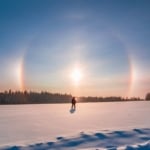
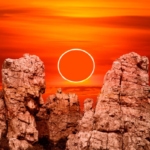
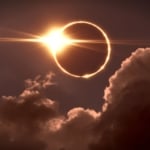
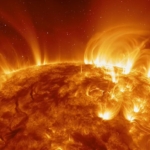
hey, do you have a twitter?
‘@FarmersAlmanac
I would like to know more about the upcoming meteor showers. Hope I have a clear night sky.
I love the time you take to explain about the stars and tell me the location to look for them in the sky.